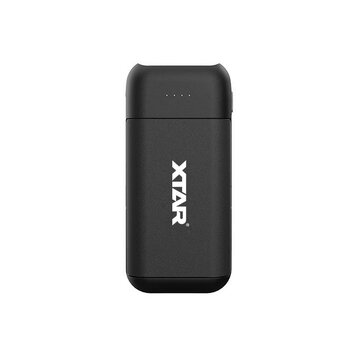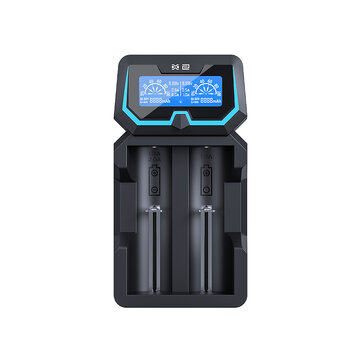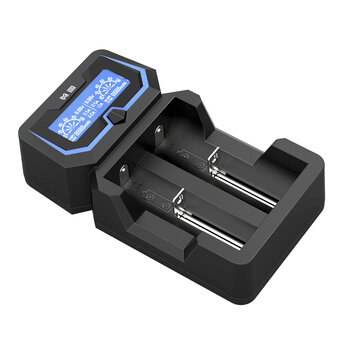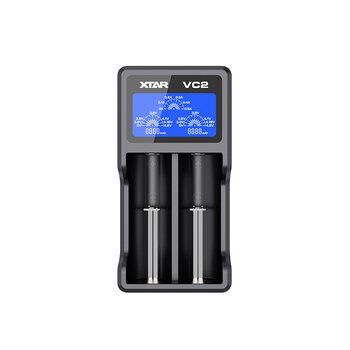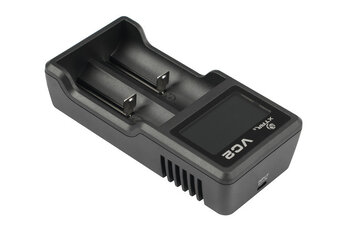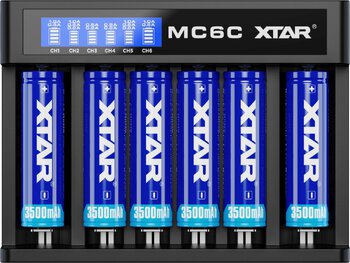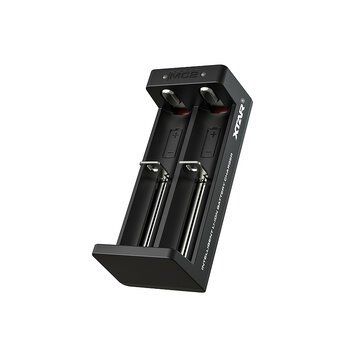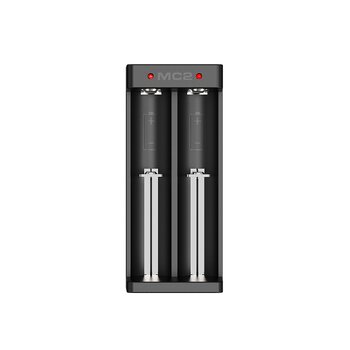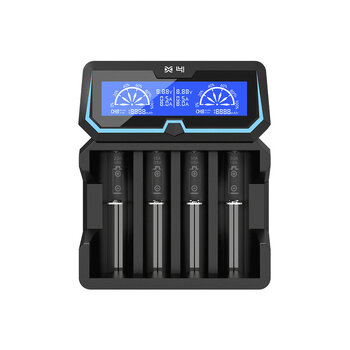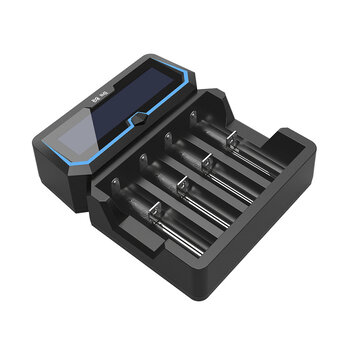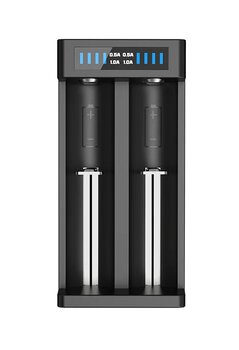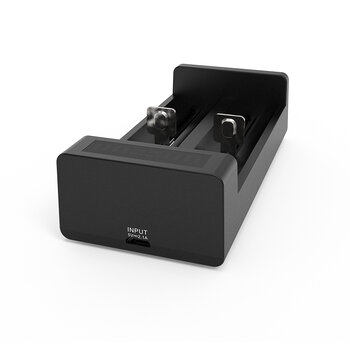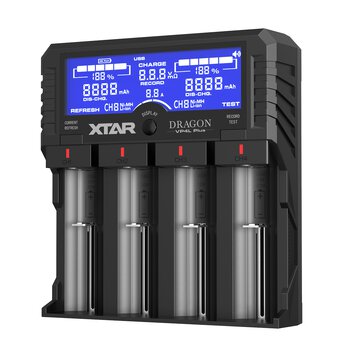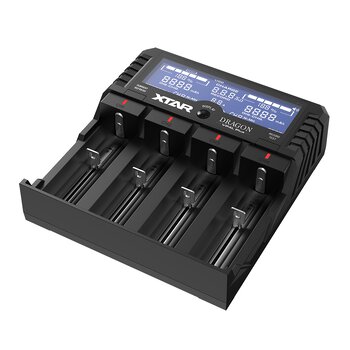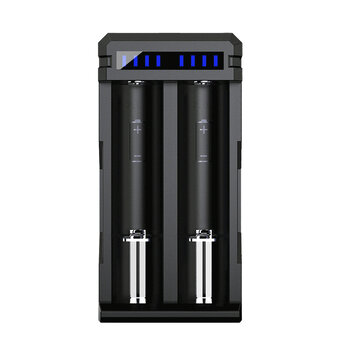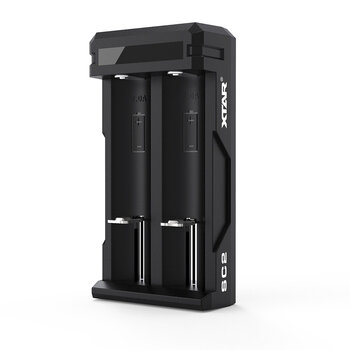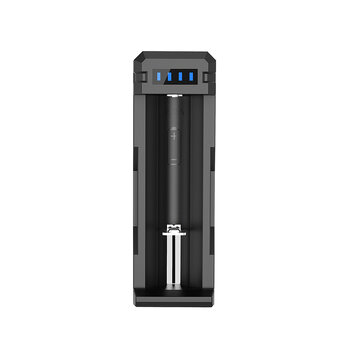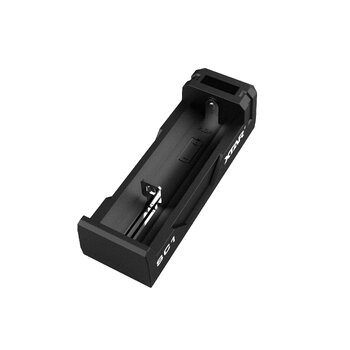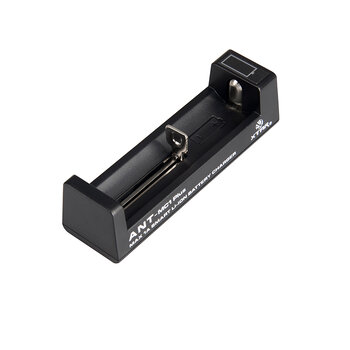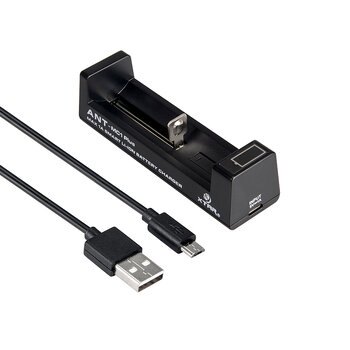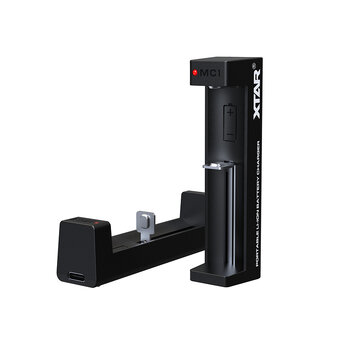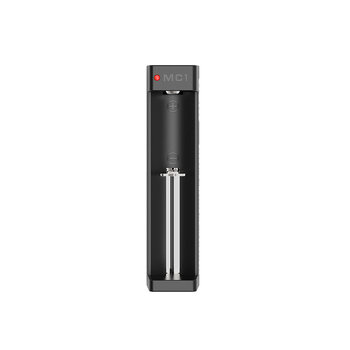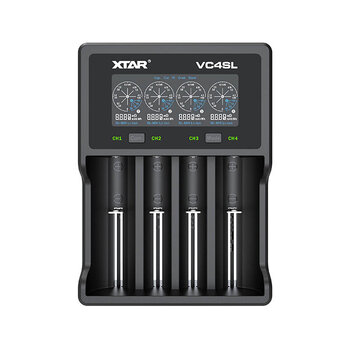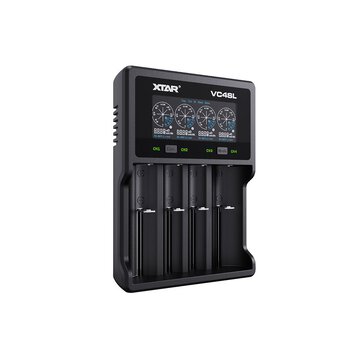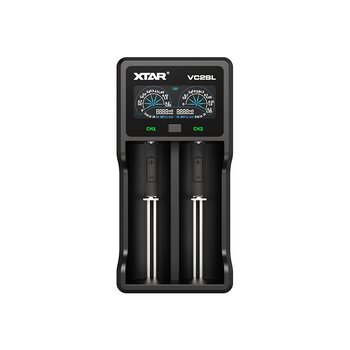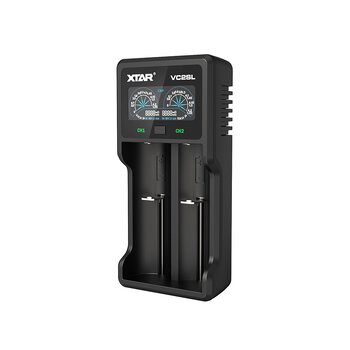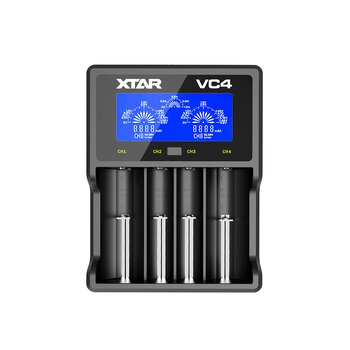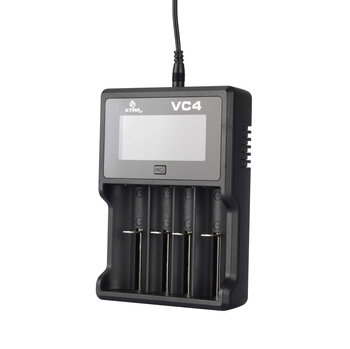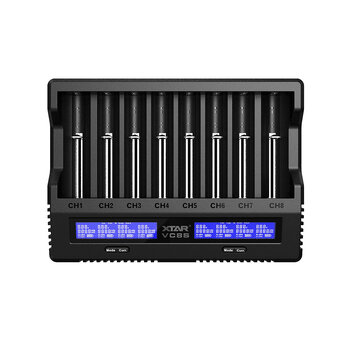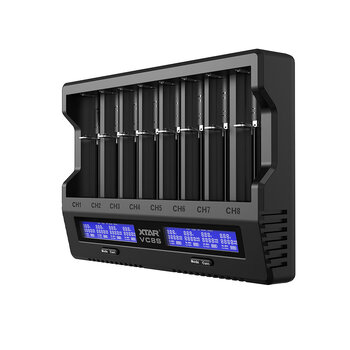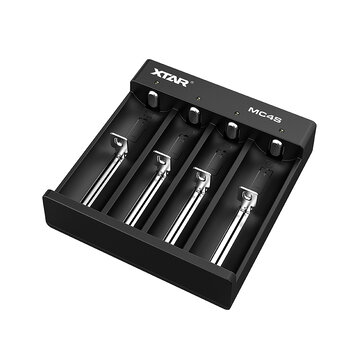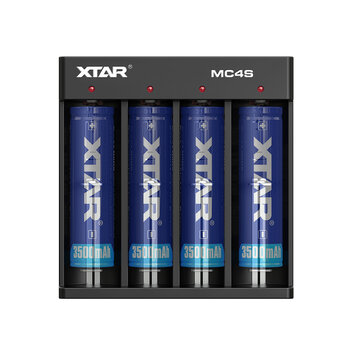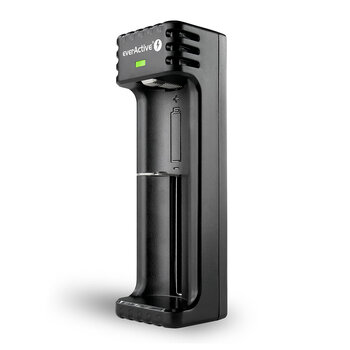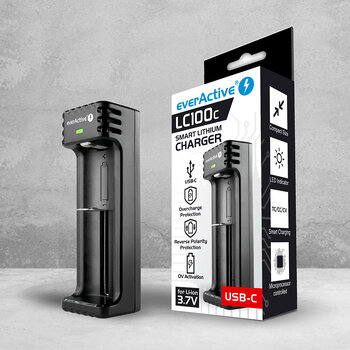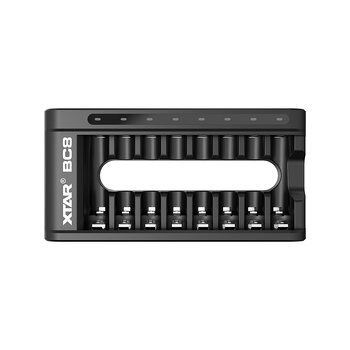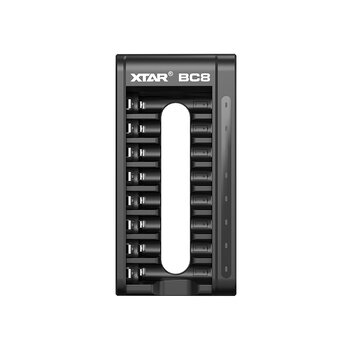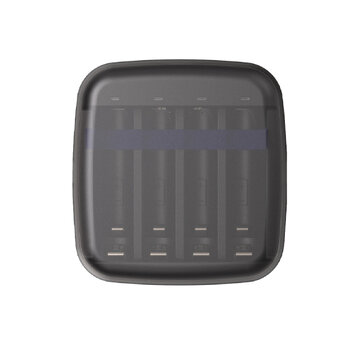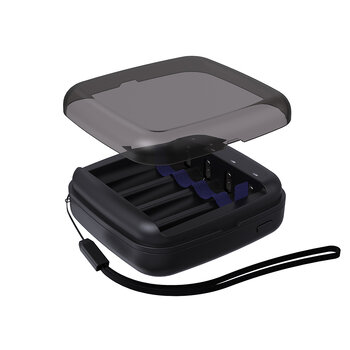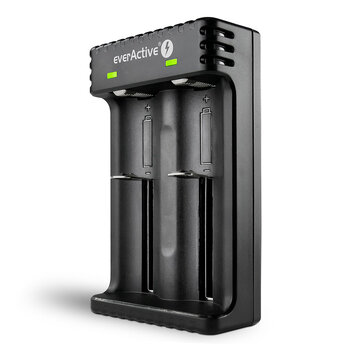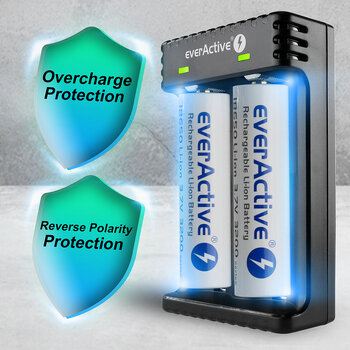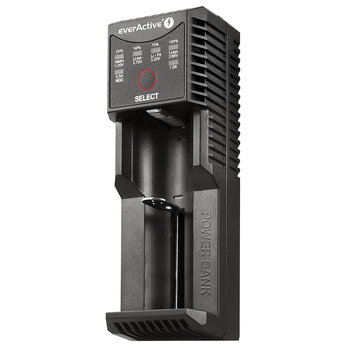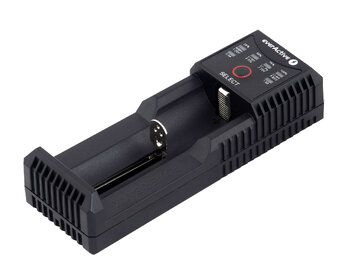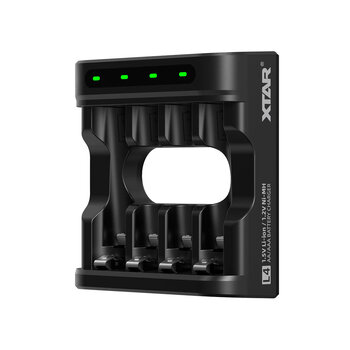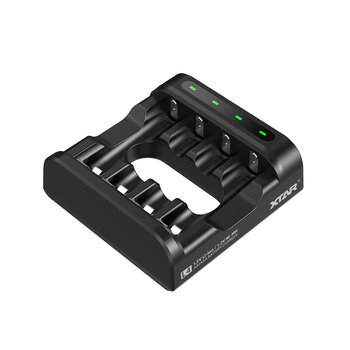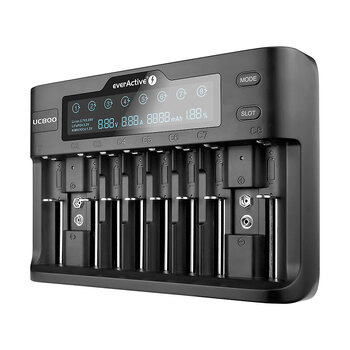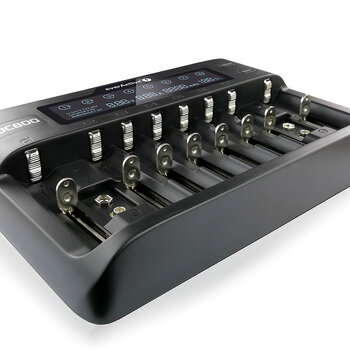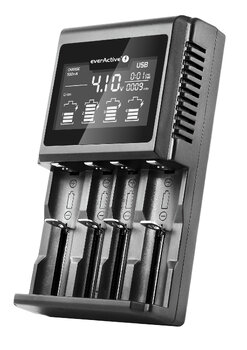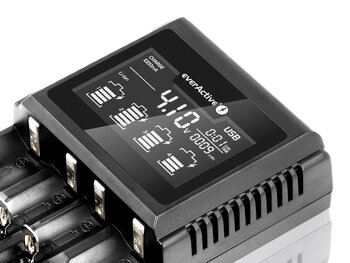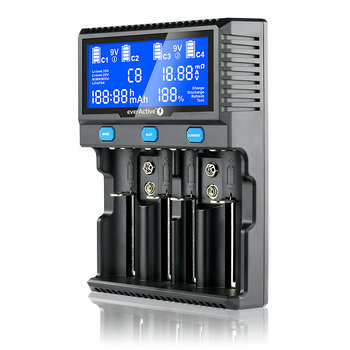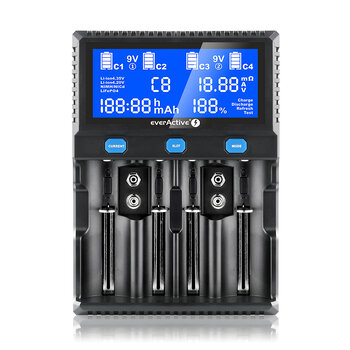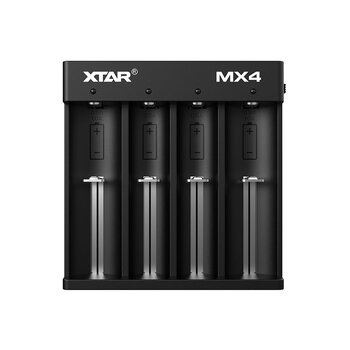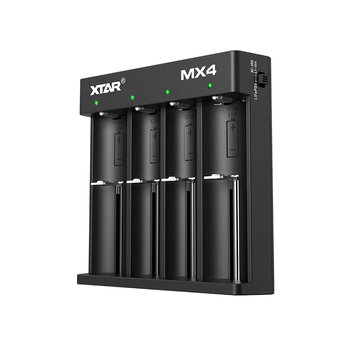Professional, compact processor charger / power bank
Xtar PB2C
for Li-ion batteries in sizes 18650 (also protected)

Key features
- processor-controlled three-stage TC/CC/CV charging process
- automatically selected charging current 2x 1A / 1X 2A
- two independent charging channels + built-in balancer
- powered by any USB charger or usb port on your computer (min. 0.5A)
- compact size - easy to carry
- magnetic charging chamber cover
- function of reactivation of deep discharged cells
- protection: short-circuit, thermal, against reverse polarity
What is the TC/CC/CV charging method? It is a three-stage li-ion cell charging process that ensures that the cell is maintained in good condition by charging with the right current at each stage and completing the charging process at the right time.
The different stages of the TC/CC/CV process are:
- TC phase: cells discharged below 2.9V are 'awakened' by a lower current.
- CC phase: when 2.9V is reached, the cell is charged with a constant current of 1A (for two cells) or 2A (for one cell).
- CV phase: When the cell is almost charged, the charger switches to charging with a decreasing current until the 4.2V voltage on the cell is reached. After reaching 4.2V, the charging process is complete - the battery is fully charged.


Batteries with a voltage of 4.1V or higher are considered charged by the charger. To fully recharge the battery, insert it into the charger before turning it on. The charged batteries left in the charger will undergo a natural self-discharge process. Charging will resume when the battery voltage drops below 4.1V.
The Xtar PB2C charger has the function of reactivating deep discharge cells and 0V cells. Many chargers on the market are unable to charge such batteries. Here comes the Xtar PB2C chargercomes to the rescue, which in many cases allows you to 'rescue' such cells. Simply insert the deeply discharged battery into the PB2C charger, as with normal charging - the charger will detect the discharged cell and attempt to reactivate it.

Attention! Cells discharged below a certain level are irreparably damaged and may not be able to be reactivated. Avoid draining li-ion batteries too deeply - this can significantly reduce their durability and capacity or lead to their complete malfunction.
Complete with Xtar PB2C charger, we get a USB type-C cable. Any charger with a USB Type-C cable, such as a phone or USB port, or a computer with a free USB port, is all you need to power the charger. The recommended minimum charger power is 1A (1000mA). It is possible to use a charger with less power, but in this case the charging time will be extended.
- Li-ion batteries 3.6-3.7V, unprotected
- Li-ion batteries 3.6-3.7V, protected (with PCM/PCB)
- 5V DC(Kabel USB-C w zestawie. Brak zasilacza w zestawie.)
- Processor-controlled TC/CC/CV for Li-ion
- 2x 1A / 1x 2A
- 4.2V ±0.05V
- Reactivation of deeply discharged cells and 0V cells
- Power bank function
- Before the charger overheats
- Against overload / short circuit
- Before reverse polarity of cells
- Charge
- PB2C charger
- USB Type-C to Type-A Cable
- Li-ion batteries 3.6-3.7V, unprotected
- Li-ion batteries 3.6-3.7V, protected (with PCM/PCB)
- 5V DC(Kabel USB-C w zestawie. Brak zasilacza w zestawie.)
- Processor-controlled TC/CC/CV for Li-ion
- 2x 1A / 1x 2A
- 4.2V ±0.05V
- Reactivation of deeply discharged cells and 0V cells
- Power bank function
- Before the charger overheats
- Against overload / short circuit
- Before reverse polarity of cells
- Charge
- PB2C charger
- USB Type-C to Type-A Cable
5th Floor, No.77 Xinhe Rd, Shangmugu
518000 Shenzhen
Chiny
Email: info@xtar.cc
Telephone: (+86) 755-25507076
Geodetów 24
80-298 Gdańsk
Polska
Email: contact@baltrade.eu
